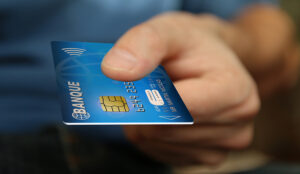ACD ‘call In Queue’ Announcements
We currently play a message to any callers in our queues saying ‘Thank you for calling, your call is in a queue and will be answered shortly’
It seems to me though that we play this message a little too often and the onlypurpose it serves is to irritate the customer and to remind them of just how long we have kept them waiting. Is there an industry standard that suggests how frequently these messages should be played? Does anyone have any comments or suggestions regarding the customers perception of service following changes to the frequency of this kind of message?
Question asked by Tracey
You Are In Queue…
Your experience with IVR messages is very true and the customer has called up to hear a human voice but not a pre recorded message. The trade-off that you are looking for is very difficult to achieve. Either you increase your manpower to handle call volumes or use automation to manage volumes by retaining the current resources.
Response Time is a performance metric critical in our industry. Normally when the customer calls he expects to hear a human voice. When he encounters a message that he is in queue makes him feel unimportant. Safe way to set a standard for response time is to ensure that the agent is answering the call within three rings.
With thanks to Vedula
Queue Announcements
I guess you have already seen the problem and it is up to you to take the initiative.
Take responsibility – you must be prepared to take responsibility for this area. If you know that it annoys your customers – do something about it as well as taking responsibility for your own actions.
So use your authority, do it with judgement and tact – you know how it frustrates you – don’t let it annoy your customers too.
If your customers like dealing with your company – they will come back time and time again and watch those profits take a steady increase and watch your career development take off at the same time.
With thanks to Richard
Tracey Some Help…
Lets look at the message itself. “Thank you for calling, your call is in a queue and will be answered shortly”
Firstly, as a human being (allegedly) this message says to me that the people who wrote it have no idea what it’s actually like to be in a queue; the continual “thanks” actually angers me over a period. Secondly, I KNOW my call is in a queue so why keep telling me. Thirdly, telling me it will be answered ‘shortly’ after holding for 20 minutes makes me want to kill… Apart from those things its great!!!
A more honest and meaningful message might be, “We apologise for the delay in getting to talk to us. We know queuing is frustrating but please be assured that we will answer you just as soon as we can. Thank you for your patience.”
Here are my reasons.
– People are ‘wound-up’ in queues so recognise it and apologise. After all it is YOUR fault!
– Recognise the point of the call ‘to talk to someone’, and make the announcer one of you rather than a disjointed ‘thing’.
– Let the caller know you understand and sympathise with their plight
– Reassure the caller that you are doing what you can
– Acknowledge that the caller is giving you their most precious commodity – time
Lastly, an absolutely critical part of this message is how the person recording it does it. It MUST be recorded with ‘feeling’ and ‘honesty’. If it is just read out then it will wind people up even more because it has no meaning. Try getting several people to do it and then ask an independent panel, of say 20 people (CSAs because they will ‘justify’ less), to judge. The question to them being, “Which version makes you feel best.” Go with the one that scores highest.
With thanks to David
Queues…
As I see it (and I know for a fact that I’m not alone), part of the problem with what I’m going to term ‘blind queue systems‘ is that there is little feedback to the caller about when they are likely to be answered.
One of the better approaches is to give some feedback to the caller, for example, to expand upon David’s idea, ‘We apologise for the delay in getting to talk to us. We know queuing is frustrating but please be assured that we will answer you just as soon as we can. You are currently number four in the queue and we expect to be able to answer your call in around two minutes‘
This approach, whilst technically a little more challenging (designers will need to have some idea of call metrics, i.e. how long atypical call takes versus typical average ‘throughput’ over similar periods, tempered with a degree of ‘magic’ to give a fair indication of the amount of time a caller will have to wait. Far better to take this approach, as the caller knows how long they may have to wait and can choose to hold on or call back later.
Of course, the Achilles Heel of this method is just that – by giving an indication of the estimated length of time before answering, you run the risk of losing customer during busy periods – after all, a ten minute ‘on hold’ session is never attractive, feedback or not…
With thanks to John
An Alternative to In-queue Messaging and Enduring the Queue
A new generation of intelligent telephony systems can offer a very simple and effective way of resolving customers frustration with waiting on-hold. Look for Automated Call Back Systems that give customers the option to avoid the queue and the in-queue messaging systems that have the potential to further aggravate. These work by letting caller’s hang-up and do something else while the technology holds their place in the queue – as if they were still on the line. When their call reaches the front, agents receive the ‘callers name’ by voice message, while the system is simultaneously dialling out to the customer. Customer service is enhanced by enabling the agent to personalise their introduction “Hello Mr Jones, this is ACME Insurance returning your call”. Customers are genuinely surprised and happy to receive a return call. There is something about the dynamic of the agent now being in control of the call and the customer being pleased to have been called back that is shown also to reduce call handling time.
Interestingly, whilst few of us would take the voicemail option in distrust that we would really have our call returned – evidence is, that around 80% of customers take the call back option. This is likely to be the way the call back is offered “we will call you back as soon as your call reaches the front of the queue”.
When these systems are in place, those customers who decide to wait on-hold and endure the in-queue messaging, actually don’t get their call answered any quicker than the customer who opted for a call back. Another key issue to bear in mind is that agents still receive an inbound call. Unlike some other queue management options such as ACD voicemail and MIS queue stat modules that require careful management and often dedicated resource to handle – automated call back systems require no change to inbound agent process.
These systems also have the advantage of connecting to any existing switch or telephony system via standard PSTN connections.
With thanks to Dee
Recorded Announcement
Why put the word “Frustrated” at all? What do you think the calls that are in a good mood would think when they hear that. I would think that a call centre that adds the word “Frustrated” in the recording is aware that there is a problem and to the customer, I would wonder why aren’t they looking into fixing the problem. Be as positive as you can in your recordings. such as…..
First RAN ” Thank you for call ……, All of our agents are currently busy servicing other customers, your call is important to us, please hold and we will be with you shortly.
Second RAN “We are sorry for the delay, please continue to hold, we will be with you shortly”
Telling someone they are 2nd or 3rd in line doesn’t tell them how long the will beon the line and what I’ve found is if you hear the amount of time before you are answered ” the current hold time is 2 minutes” it’s never 2 minutes, it’s always longer so why frustrate the caller by lying to them on top of being put on hold.
With thanks to Lawrence
Correction
Sorry. I meant “callers” and not “calls”
Why put the word “Frustrated” at all? What do you think the calls that are in a good mood would think when they hear that. I would think that a call centre that adds the word “Frustrated” in the recordingis aware that there is a problem and to the customer, I would wonder why aren’t they looking into fixing the problem. Be as positive as you can in your recordings. such as…..
With thanks to Lawrence
Feedback In the Queuing System
Lawrence wrote:
| “Why put the word “Frustrated” at all? What do you think the calls that are in a good mood would think when they hear that.“ |
I hear what you’re suggesting and can see your point of view, but remember that when you hit a queue, you are effectively being denied direct contact to an operator, and therefore you aren’t able to complete your objective.
Therefore, queues are always viewed negatively; one normally expects some kind of a delay, but it would be nice if the odd call centre apologised once in a while. On the other hand, you’re perfectly right to say that it can be viewed as a negative and perhaps slightly unnecessary thing to include.
| “Telling someone they are 2nd or 3rd in line doesn’t tell them how long the will be on the line and what I’ve found is if you hear the amount of time before you are answered ” the current hold time is 2 minutes” it’s never 2 minutes, it’s always longer so why frustrate the caller by lying to them on top of being put on hold.“. |
Your suggestions are pretty much the norm here in the UK, but you have to view things from the perspective of the caller. Listening to the same message again and again is frustrating. At least the ‘feedback’ version gives some reflection of how ‘close’ one is to being answered, or attaining ones objective of speaking to an operator. The beauty of interaction is that it’s a two way thing. A well designed queue can’t be two way, but at least it can impart some positional information so that the caller isn’t left in the dark.
I liked Dee’s approach; it’s progressive and proactive, but the drawback there is that the caller may feel a bit ‘fobbed off’ with a promise to be called back – bearing in mind how many companies promise such things and don’t deliver…
With thanks to John
Feedback On “voice Mail” Messaging
First time on the site so here’s hoping this works…
Other possible options to add to those above, if you do use an ACD voicemail system, is to give as much information as possible to the customer which should hopefully reduce the average handling time as well as direct them to other service channels.
For example “Our opening hours are 9am to 9pm and you can also reach us at ACME.com where you can place an order etc.”
In addition you can also dispense with any “Must mention” phrases like Data protection, Lending codes etc. etc.
With thanks to kirk
OFT, Data Protection, Legislation
Hi. Can someone let me know what kind of influence these official bodies have over what has to be said in ACD systems?
With thanks to William
Response to “an Alternative to In-queue Messaging”
I realise the discussion has moved on a bit – however as automated call back technology is a new way of managing the call queue, which some may be unfamiliar with, I would like to add a comment to John’s response which may be of interest.
“the caller may feel a bit ‘fobbed off’ with a promise to be called back – bearing in mind how many companies promise such things and don’t deliver…”
You’ve touched on the key value of ‘automated call back systems’ here, in that they do in fact enable call centres to promise … and deliver. They do this by managing the call-back within the parameters of the current live queue, crucially maintaining the callers position – this and the fact the process is fully automated ensures not only that customers get their call back but that they get their call back within an acceptable service level.
With thanks to Dee
Response
“the caller may feel a bit ‘fobbed off’ with a promise to be called back – bearing in mind how many companies promise such things and don’t deliver…” “
I completely agree…. I have been doing some research on this in the last few weeks over some different vertical markets with call back response and email response and to be honest the results were really bad.
With thanks to Annabelle
Call Back and Email Response
Annabelle wrote:
I have been doing some research on this in the last few weeks over some different vertical markets with call back response and email response and to be honest the results were really bad.“
With thanks to John
Email Response
Everyone can have access to the results although they are still ongoing…..
in a nutshell this is what we found
Analysis of websites email response customer requesting info:
56% successfully emailed
12% errors occurred on submission
15% no contact
6% no data encryption
11% unable to logon
Analysis of response so far from the 56% of sites that we were able to email:
Reponses within 24hours
62% no response
24% standard response
14% personal response
Response between 24 and 48 Hours (of those so far no response)
59% no response
27% standard response
14% personal response
and it goes on…. the % of 24 hour response was only 38% – personally I think that is certainly a poor reflection and image that these people are projecting to potential new clients. Although this cannot be used for every single vertical market that exists it certainly is an indication of what is going on. More and more people are using the internet for communication to call centres moving away from the traditional call in one central number and if we cannot get it right from the beginning then the mindset of human nature will be against using it. So many people I have spoken to distrust whether email response works and end up calling or writing for the information you require.
Companies should either revise the way in which they manage email or put in some form of automated response. There are so many products available on the market nowadays which range from incredibly simple to massively complicated full internet call centre which could improve these figures and restore the general publics face!!!!!.
apologies for going on, I tend to get on a soap box after a while
With thanks to Annabelle
ACD ‘call In Queue’ Announcements
I heard a great “queue announcement” recently whilst calling a company who shall remain nameless;
“It has taken longer than we would have liked to answer your call. We apologise for this, we know you are waiting and if you are able to continue waiting we will be happy to help you as soon as an operator is free.”
I thought this was one of the less irritating messages I have heard.
With thanks to Rhona
ACD Announcements
Rhona, why can’t all ACD announcements be as concise and ‘acceptable’ as this? After all, it both acknowledges and apologises for the delay that the caller is experiencing, and retains a positive tone for the remainder of the message indicating that they’d be happy to help once an agent becomes free.
It’s a small step in words but a big step in customer-friendliness from ‘You are currently in a queue. Please hold.’
With thanks to John
ACD ‘call In Queue’ Announcements
Hi, my first time on this site, so hopefully this reply makes it to the list. I’ve looked through all the messages here, and there are some excellent comments and suggestions. I’d just like to go back to Tracey’s initial question:
(It seems tome though that we play this message a little too often and the onlypurpose it serves is to irritate the customer and to remind them of just how long we have kept them waiting. Is there an industry standard that suggests how frequently these messages should be played? Does anyone have any comments or suggestions regarding the customers perception of service following changes to the frequency of this kind of message? ), which in itself has not really been answered.
Tracey, a few questions:
1. How often do you replay the message?
2. Do you have one initial message, followed by a ‘comfort’ message, or do you only use one message repeatedly?
3. What is your average Time to Answer?
4. What is your average Time to Abandon?
I’ve called numbers in the past where the message comes back in almost as soon as it had finished playing the first time, in other words, the programmer had not left a large enough gap from the end of the message to the start of the next one. Guaranteed to raise the blood pressure. Conversely, I’ve heard others where the gap is so long, the caller’s phone bill is through the roof before they even hear the message. We usually have the initial message at about 20 seconds, with comfort messages at about 25 seconds.
But a point to stress, you should not be relying on these messages as a replacement for having enough agents. This is where the timing measurements come in. If you have an average Time to Answer approaching 30 seconds or more (note I say average, there will be peaks and troughs), then you are stretching your resources, and callers will be unhappy. If your average Time to Abandon is spookily about the same time as one of your announcements is kicking in, then you can assume the callers have got fed up hearing it.
Obviously it’s very difficult to give full advice without knowing the overall setup of your operation. For example the technology you are using may not have all the latest features, etc.
With thanks to Pete
ACD ‘call In Queue’ Announcements
Propose alternatives to callers on hold.
There are some products in the market that leverage all communication mediums into a single platform, thus affording the caller to leave and timely receive, another type of message ( e-mail, chat, etc ).
They also include reporting for timely response in all mediums.
With thanks to Antonio
‘What Works for You Personally’
There are times and services when you have to accept that you will have a long queue time, indeed you may have some services where you literally don’t care how long the caller has to wait (I can hear the Gasps already! – but trust me).
I have a client who sold tickets for a service where there was a finite amount available and these tickets would always sell. The small call centre was staffed to be able to sell the tickets and not to handle all of the calls – if one caller dropped out, ‘there’ll be another along in a minute’. It wasn’t unusual for average queue times upward of 45mins.
In this situation as all I could try to do was provide the customer with as pleasant an experience as possible whilst queuing (ifthat’s not a paradox).
- Ensure that the music on-hold is of a generally acceptable nature. Popular songs worked well here – the feel good type that people sing along to (tailor to the typical caller)
- MOH didn’t repeat/loop (too often).
- Give the caller the option of listening to informational announcements about the service whilst still maintaining a queue position (this also reduced agent talk time).
- Greeting announcements explained that queue times would generally be long because of the nature of the service.
- The first follow-up comfort announcement after 30secs, then every 45secs, and eventually every 90secs. – This can affect the caller’s perception about the time that they have queued (and also reduces those annoying interruptions into their sing along)
Ultimately, where no hard data/survey is available for reference, don’t be afraid to go with your instinct based on what works for you ‘as a customer’, look for feedback and change it if necessary.
Finally, this type off approach must be a last resort though. Where customer service is important, I would echo all that has already been said above re. genuine announcements (with feeling and an apology where appropriate), correct staffing levels etc.
As for automated call back – I’ll let you know, as a current client is soon to implement it . . .
With thanks to a
ACD “Call In Queue” Announcements.
The real problem is that most callers hate call centres. My research shows that 81% of callers have frustrations to talk about. An equal percentage are prepared to terminate their call. They want to speak to a human – the purpose of their call. If automatic call back systems are used they should operate within aminute, or centres should have more staff.
With thanks to Donald
More Research
Donald, I agree with you on the point of speed. Unfortunately many call centres can’t realistically afford to employ more staff to answer all calls within a few seconds at peak time – without having agents under-optimised as peaks tail off.
Automated call back systems guarantee a quick call back because they take the callers place in queue as if they were still on the line – callers only have to press 1 and say their name to take this option. When their place reaches an agent, agents hear the customers voice recording while the system is automatically ringing the customer – agent armed with the callers name can greet them personally.
These are the findings of independent research of users of the QueueBuster automated call back system: Future Foundation 2001 – Thames Water, npower Yorkshire
Customers
97% it would be good if more companies offered a call back system
85% it improved my opinion of the company
88% Companies offering QueueBuster care more about their customers than those that don’t
Agents
94% QueueBuster customers are easier to deal with than those who have waited on-hold
93% QueueBuster is reducing the levels of angry and frustrated customers I have to deal with
89% QueueBuster is making my job easier
With thanks to Dee
Solution for Queuing Problem
We had working on this particular problem for a quite a time now. We have been researching on this particular problem to see as which parameters hypotheses the customers irritation level in case of time lost in queue. Though lot of parameters have been found relevant a definite answers is still to be found.
Once the parameters are found we will use AI and Other Linguistic Techniques to alter responses at different levels of time intervals. This would indeed increase the level of customer comfortability in such situations.
I would like to put forward a simple example for the above mentioned.
suppose there are 5 people in the ACD and all of them are being played the same message. Assumption is we have a FIFO systems in place ,it is most likely that the person who has been in the queue for the most time may hear a repeat message. Now its here wherein we can use AI as a solution. Intelligent computing helps us to deal with a customer in a more Human interactive way.
But for that we need to know more as what parameters are correlated with this problem. According to time spent in the queue we can have different voice messages.
We would like to estimate (w,Tw, q,Tq), waiting items, waiting time, queued items, and queuing time, mean and standard deviation of each.
Assumptions made about queuing model is summarized using a notation:
G – general distribution, M – exponential distribution, D – deterministic fixed rate
Accordingly models are named: M/M/1 refers to Poisson arrival , exponential service .
If anybody of you have done any further research on the above mentioned please tell me.
With thanks to Sudip
ACD Call In Queue Announcements
Dee, I appreciate your comments. It would appear that I never call a centre that uses latest technology, as it is not uncommon to wait on hold for anything from three to twenty minutes. As regards “peak times” it would appear that this any time of the day for many centres. Again I say that the opportunity to be called back should be available after a maximum of two minutes or more call handlers should be employed. After all, companies claim that the reason for the centres is an efficiency in customer service. Really they mean costs. Why else, when they freely admit that centres opening in the sub-continents gives access to a wel-educated, low cost English speaking work-force?
With thanks to Donald
ACD ‘call In Queue’ Announcements
Hi Tracey,
I think an option would be to offer a callback whilst staying in the queue.
If you gave the customer a chance to put the phone down and know they are still in the queue, they can get on with what they want to do and get called when they get to the front of that queue.
Another option is to have many messages given at different times using a solution that only charges for one message function and allows unlimited messages
If you want any more advice please call me on 01923 264142
With thanks to Shaun
Call Waits
Waiting in queue can be made more frustrating by hearing the same things over and over.
Why not give your caller some information whilst they are on line and at your disposal.
Advertise your website or special offers, tell them how they could save money or let them know how much you value their feedback and could they mail you at ……..
With thanks to Becky
Like Becky
I agree with Becky. We prompt our customers to ask about special deals etc.
Its better than saying you will be in a never ending q….
With thanks to Charlie
ACD Queue Message Frequency
In reference to the original post
“It seems to me though that we play this message a little too often and the only purpose it serves is to irritate the customer and to remind them of just how long we have kept them waiting. Is there an industry standard that suggests how frequently these messages should be played?”
It has been some time since I last had a chance to share pearls of wisdom with the fantastic body of minds now drawn to this forum. After reading many of the posts prompted by the original request I thought it may be appropriate to get back to some good old fashion CC management I MIS assessment. Sometimes I think we have let technology take all the fun out of Call Centre management.
In my early days as a CC manager, this was a regular issue raised by many customer satisfaction surveys. Often messages were left to repeat based on ACD factory settings, which resulted in an almost drum beat like repetition of the “sorry” message.
I found that the best way to address this was to monitor my average speed of answer and set my repeats to activate after this time frame (providing This did not exceed 30 seconds). In this way a majority of queued calls would only receive the welcome message and possibly one repeat prior to being answered. I would then focus on productivity, rostering and good old fashion management to ensure I could contain the average speed of answer within acceptable standards.
I hope this flashback may be of help to those whose budgets have yet to stretch out to meet the costs of todays great technology improvements.
With thanks to Jim
Author: Jonty Pearce
Published On: 12th Apr 2022 - Last modified: 3rd Oct 2025
Read more about - Call Centre Questions, Automatic Call Distributor (ACD), Call Centre Answers





































